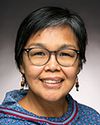Thank you, Mr. Chair.
During our first hour with the minister, Ms. Hajdu, we talked about the Office of the Auditor General's 2018 report on elementary and secondary education on reserves. We discussed a number of issues, especially how hard it was to obtain data to get an accurate reading of the situation. That's what was discussed.
At the very end of the discussion, I brought up indicators. Of the 23 measures used, the department did not report on 17 of them. I would think the departments are the ones that select the measures.
On one hand, there are no data, and on the other, measures can't be reported on because of the lack of data. We were told that a transformation would be taking place, and I hope that's the case.
I have other questions along the same lines.
Of course, you set targets with the best of intentions. In June and December of 2015, the Truth and Reconciliation Commission of Canada released reports containing recommendations. One of those recommendations calls on the federal government to work with indigenous communities to develop a strategy to reduce—in an ideal world, eliminate—the gap in education and academic success between non-indigenous communities and indigenous communities. The government later said that it had implemented measures to close the gap.
In short, the government said in 2015 that it had implemented measures to close the gap, but a few years later, the Office of the Auditor General put out a report stating that what the government was doing wasn't working. The department wasn't collecting the necessary data. The report even said that the funding system wasn't working and that the whole strategy should be reviewed.
Have you introduced a new strategy since?
According to the government's website, new measures were put in place to close the gap. What are those measures? I'm not talking about the measures that were implemented previously. I'm talking about new measures.
Feel free to tie in other issues as well. We are talking about funding, yes, but the problem goes beyond education funding. My fellow member Mr. Hanley brought up language. The last study dealt with that. The issues don't exist in silos; they are interconnected.
You have free rein to go outside the scope of the question.





